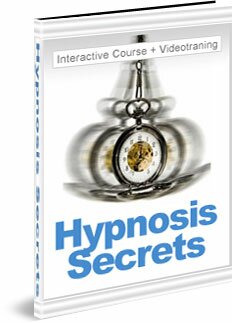Hypnosis And Traditional Psychoanalysis
Here is an article by Rebecca Miller, which represents a school of thought that I personally do NOT think is a valid model. It’s based on paradigms of traditional psychoanalysis, which has proven to be ineffective in helping people to lead better, happier and mentally healthier lives in several widely-accepted studies. But I think it’s still important to familiarize yourself with this concept. See, when you study hypnosis – just as when you study anything else – you want to get a wide spectrum of opinions and perspectives, and not stick only to what you think is right. This way, you can decide by yourself which path to follow, rather than following a dictated 1-2-3 process.
The best way to hypnotize people is to present visual stimuli. The visual stimuli should be harmonically repeating because we want to create a resonance in the subject’s brain to override the current processing. Traditionally a swinging watch had been used. However any object that can swing between the right and left visual field can do the job. Even a tennis game can be used. But the players should be sending the ball back and forth without doing any exciting moves that may distract the subject.
The person who is conducting the hypnosis should be giving some audio sensory stimulus during this process.
Since all the brain functions of the subjects are consumed with the processing of the visual stimuli the subject’s brain will be defenseless to against whatever is induced using audio sensory stimulus.
The hypnotic subject will then shut off all conscious brain functions and will start to process the commands that he or she hears.
At this stage the person conducting the hypnosis can ask questions. The subject will reply without the control of conscious processing so the output coming from memory or subconscious would not he inhibited as it normally be. Using this technique the subject can deliver information which would normally not be available to the subject because of repression or other conscious psychological mechanisms. (However – it can not be used as a “truth serum”. Even the unconscious mind will keep secrets if it decides that this is better for the subject. It’s not like in the movies.)
Here the most important thing is that, the questions asked to the subject should not be of the nature that will create a high level emotional response. Because in such a case the conscious processes may kick in, subject might awake and then can find himself or herself confronted with information that is very difficult to handle.
This situation may bring serious damage to the psychological state of the subject and may even create psycho pathology. Because of this hypnosis should only be conducted by well trained professionals who know how to conduct hypnosis and also able to handle cases where things might be going out of hand.
The end of the hypnosis is also a very critical period. The person conducting the hypnosis should slowly start asking questions that the subject normally encounters in his or her daily routine so that the patterns formed in the brain of the subject are closer to the ones her or she encounters in a daily routine.
For example the subject might be asked where he lives, what his profession is or the name of his pet. At the end, once the subject is able to talk about daily issues, subject will be asked to wake up. Once the subject wakes up, he should not be given any details of the questions or answers.
Normally the subject will not know how much time has elapsed. This is a phenomenon called “hypnotic time distortion”. So it is to the best interest of the subject to tell him that the hypnosis process had not been successful and then use the information throughout the rest of the therapy process with extreme care and make the subject remember and consciously deliver the information from the hypnosis session.
As the information is primed during the hypnosis session, the subject will more easily remember these things during the normal therapy sessions.

